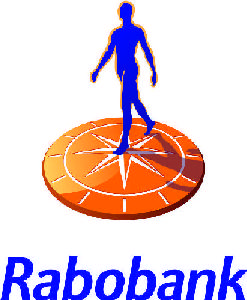English Deutsch Index
Nederlands
317 Transport in de fabriek
Audio
De stapelplaats van bieten bij een suikerfabriek heet GOR. Dat is een afkorting van Grote Opslag Ruimte.
Vroeger bestonden de vloeren van de gorren uit schuin aflopende betonvloeren naar zogenaamde zwemgoten. Op de boerenwagens en de vrachtauto’s lagen de bieten op netten. Kranen brachten de netten boven de gorren en dan koppelde men de netten aan één zijde los.
Waterkanonnen spoten de bieten van de GOR in goten naar de wasmolen in de fabriek. In de wasmolen worden de bieten gewassen zodat er geen aarde en klei meer aan zit.
Bieten uit schepen werden door grijperkranen op de zogenaamde scheep gorren gelost.
De bieten uit spoorwagons kwamen niet op het gor maar met spuitkanonnen spoten ze de bieten rechtstreeks vanuit de schuinstaande wagons met open wagondeuren, in de zwemgoten.
Nu gaan de bieten vanaf de GOR met transportbanden tot in het washuis en spuitkanonnen zijn niet meer nodig.
Ook werden complete vrachtwagens gekanteld om de bieten op de transportbanden te storten.
Werk met spuitkanonnen op de gorren was vakwerk. De bietenspuiter moest de juiste hoeveelheid water gebruiken om de bieten goed te laten zwemmen in de goten, wat dikwijls over wel 100 meter afstand ging. Deed hij dat niet goed, dan had je verstoppingen met alle ellende van dien. In de winter was dit werk bij kou en vorst geen pretje. Tegenwoordig beschikt men over doorwerkkleding, maar vroeger had men zware stugge ‘olie’ jassen en een zuidwester, die bij vorst keihard werden. Men kon zich een klein beetje verwarmen aan cokespotten, oude olievaten met gaten waarin cokes gestookt werd, die her en der stonden om te voorkomen dat de leidingen e.d. zouden bevriezen.
Aan de overzijde zie je verschillende onrechtmatigheden, die met de bieten mee gekomen zijn, zoals ‘n oude autoband, blikken bus, koeienhoorn, melkbus deksel en verschillende stukken hardhout en stenen.
Zij veroorzaakten veel problemen op de snijmolenmessen, waardoor men slecht snijdsel kreeg.
U kunt nu verder gaan met nummer 319 “Wasmolen”
English
317 Transport in de fabriek (Transportation in the factory)
Audio
The storage area for sugar beets in the factory is called GOR. That is an abbreviation for “Grote Opslag Ruimte” in English Large Storage Space.
In the past, the floors of the GOR consisted of sloping concrete floors to so-called swim canals. On the farm vehicles and lorries, the sugar beets were placed on nets. Cranes brought the nets above the GOR areas and the nets were then disconnected on one side.
Water cannons spray sugar the beets from the GOR in gutters to the washing mill in the factory. The sugar beets are washed in the washing mill so that there is no soil or clay left on them.
Sugar beets transported by ships are unloaded by grab cranes onto the so-called ship GORs.
The sugar beets transported by railway wagons are not put onto the GOR’s but with spray cannons are sprayed directly from the sloping wagons with open wagon doors, into the swim gutters.
After this the sugar beets are moved from the GOR, with conveyor belts, to the wash house and spray cannons are no longer necessary.
Complete trucks can also be overturned to dump the sugar beets directly onto the conveyor belts.
Working with spray cannons on the GORs was specialised work. The sugar beet sprayer had to use the right amount of water to get the sugar beets to swim well in the canals, which often was up to 100 meters away. If he didn't do that properly, you could get blockages with all the problems that that entails. In winter, this work was no fun because of cold and frosty conditions. Nowadays people have special light working clothes, but in the past they had heavy stiff 'oil' coats and a south-westerly, these became rock hard when frosty. One could heat oneself a little bit at fire pits, old oil drums with holes in which coal was lit, these were scattered here and there to prevent the pipes etc. from freezing.
On the other side you can see various impurities that came with the sugar beets, such as an old car tire, tin can, cow horn, milk can lid and various pieces of hardwood and stones.
They caused a lot of problems on the cutter blades, resulting in bad cutting.
You can now proceed with number 319 "Wasmolen"
Deutsch
317 Transport in de fabriek
Audio
De QR code voor deze pagina is 




